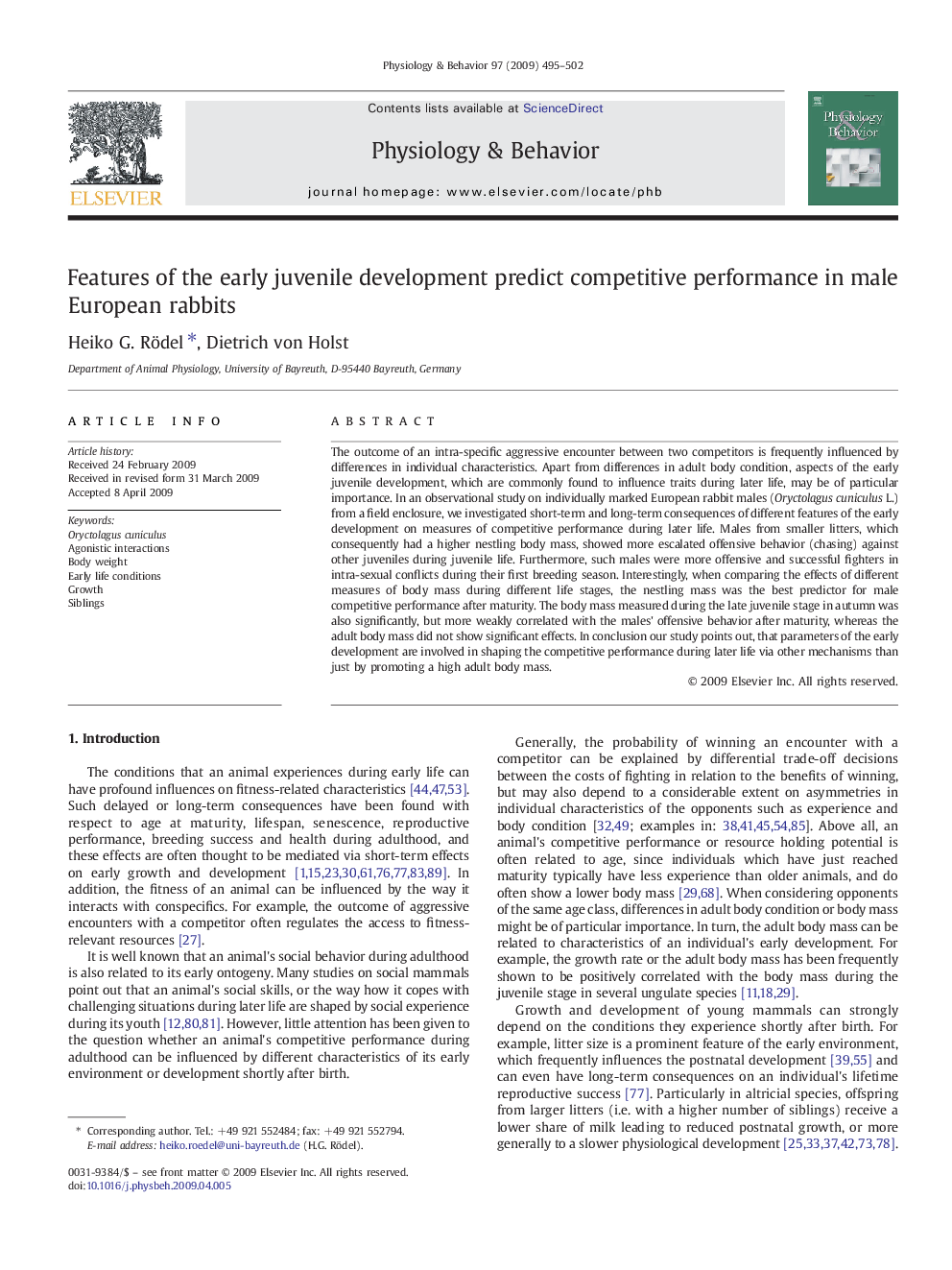| کد مقاله | کد نشریه | سال انتشار | مقاله انگلیسی | نسخه تمام متن |
|---|---|---|---|---|
| 2845759 | 1571210 | 2009 | 8 صفحه PDF | دانلود رایگان |

The outcome of an intra-specific aggressive encounter between two competitors is frequently influenced by differences in individual characteristics. Apart from differences in adult body condition, aspects of the early juvenile development, which are commonly found to influence traits during later life, may be of particular importance. In an observational study on individually marked European rabbit males (Oryctolagus cuniculus L.) from a field enclosure, we investigated short-term and long-term consequences of different features of the early development on measures of competitive performance during later life. Males from smaller litters, which consequently had a higher nestling body mass, showed more escalated offensive behavior (chasing) against other juveniles during juvenile life. Furthermore, such males were more offensive and successful fighters in intra-sexual conflicts during their first breeding season. Interestingly, when comparing the effects of different measures of body mass during different life stages, the nestling mass was the best predictor for male competitive performance after maturity. The body mass measured during the late juvenile stage in autumn was also significantly, but more weakly correlated with the males' offensive behavior after maturity, whereas the adult body mass did not show significant effects. In conclusion our study points out, that parameters of the early development are involved in shaping the competitive performance during later life via other mechanisms than just by promoting a high adult body mass.
Journal: Physiology & Behavior - Volume 97, Issues 3–4, 22 June 2009, Pages 495–502